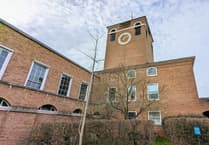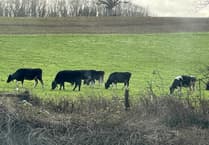ACCESSIBILITY to St Swithun’s Church at Sandford, located in the centre of the village, can be a challenge at times - but a project hopes to improve that.
Jim King, the church’s Gift Aid Treasurer and long-time member of the congregation, explains: “Ever since the 1980s, St Swithun’s has been trying repeatedly to get permission from the Church Authorities to make the cobbled pathway to the church and churchyard more ‘user friendly’.
“Permission has now been granted to carry out the work, and fundraising is underway to try and raise the total cost of £141,218.
“This large sum arises because of the restrictions imposed through working on a Grade 1 listed site, the need to involve many organisations and to employ an architect to draw up the plans and seek the various permissions.
“Fundraising and grants have so far raised nearly £70,000.
“The work involves the cobbles being taken up, the path area drained, the cobbles relaid, together with stone paving slabs.
“This will make a better surface to walk on, and also provide easier access for wheelchairs, and funeral trolleys.”
Mr King explains that a copy of the plans can be viewed on the blue notice board at the back of the church and can also be seen in the September issue of the “Sandford Crossing” magazine.
He continued: “The path fundraising group is now applying for a grant from the Heritage Lottery Fund for the path, together with some associated community projects, which will provide safe wildlife habitats in and around the churchyard and church building.
“This is our contribution to help reverse the national decline in species such as hedgehogs, swifts, bats and pollinators.
“The whole project has been named: Sandford Heritage and Wildlife Way’.
St Swithun's Church, Sandford, has Saxon origins but was largely rebuilt in the early 13th century with significant Tudor and 19th-century alterations, including the impressive Elizabethan bench ends and the late Gothic architectural style. The church experienced periods of closure, notably in the early 12th century after a fight between two boys during Mass and death of one of the boys which led to the church being closed for 11 years.
It also closed for a period in the mid-15th century before being reopened and renovated in the Tudor style around 1523.
The church is known for its historical features, such as the 1657 West Gallery, its richly carved 16th-century bench ends depicting scenes from Elizabethan England, and more recently, the 2010 addition of a modern community space under the gallery.
If you would like to support the church appeal, please contact Jim on 01363 774101.





Comments
This article has no comments yet. Be the first to leave a comment.